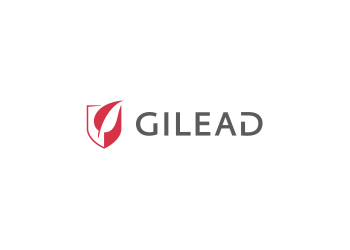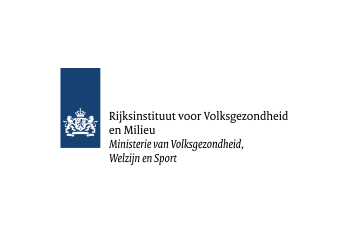HIV is not yet curable, there is no cure for HIV. Research is currently being done into it, but this research is still in the early stages. If a way is found to cure people of HIV, it will still be a long time before the cure is available. Optimistic researchers think there could be a cure within 10 to 15 years.
In brief:
- Worldwide, two people have been cured of HIV after undergoing dangerous stem cell transplants
- Up till now, there is no safe way to cure people of HIV
- A lot of research is being done into cures for HIV
- Two types of cure are currently being researched: a sterilising cure and a functional cure
The search for a cure
Nowadays HIV can be treated successfully with HIV medication (antiretrovirals), and this means people with HIV can live just as long as other people. However, HIV medication often comes with side effects, it is costly, and it needs to be taken according to a fixed schedule. People with HIV often feel stigmatised, have negative feelings about their health and about living with a secret. So for many people with HIV, a cure would be very welcome.
Two types of cure
Two types of cure are currently being researched: a sterilising cure and a functional cure. With a sterilising cure, the virus is completely eliminated from the body, and the person no longer has HIV. With a functional cure, HIV does remain in the body, but in such a tiny amount – or in a deeply dormant state – that it cannot multiply effectively. This means that with such a small amount of virus in the body, HIV medication is not needed and the virus cannot be transmitted. So a functional cure means that you are cured, even though a small amount of HIV remains in your body.
Various methods
Various methods, which may lead to a cure for HIV, are currently being researched. Probably a combination of different methods will have to be used. The following methods are the most promising:
Post-treatment control
When you get HIV, the virus multiplies rapidly in the body and the viral reservoir gets larger and larger. Several studies have shown that the sooner a person starts taking HIV medication, the smaller the reservoir remains. Read more here about the viral reservoir.
After receiving a temporary treatment, some people with a small viral reservoir are able to suppress the virus for a longer period without taking HIV medication. This is called post-treatment control and is seen as a possible functional cure. People treated soon after being infected are more likely to receive post-treatment control than people already infected for a longer period.
The Mississippi baby was an example of this. She was born with HIV and was treated immediately after the birth. Unfortunately, a year and a half later when she was released from care, her mother stopped giving her HIV medication. When the baby was taken into care again, the doctors were surprised to find she had been able to suppress the virus for a long time without HIV medication. Unfortunately, after 2 years without HIV medication, the virus began to multiply again.
There are several examples of babies and children who sometimes retained a suppressed viral load for up to 10 years without taking HIV medication. Research on this is also being carried out on adults. The VISCONTI study done in France treated participants shortly after they were infected. After temporarily taking HIV medication, 15% of the participants had an undetectable viral load for at least a year. The Nova study, currently being conducted in the Netherlands, researches early treatment and post-treatment control.
Genetic engineering
It is estimated that around 1% of people worldwide are resistant to the most common HIV variant that uses the CCR5 receptor. The reason for this is a genetic mutation (CCR5Δ32), which means people have a mutated CCR5 gene. CRISPR-Cas is a protein that can insert this mutation into the CCR5 gene in people who do not already have this mutation. To do this, immune cells must be taken from the body. The CCR5Δ32-mutation is added using CRISPR-Cas. This eliminates CCR5 from the cell and prevents HIV from attaching to it. This means HIV can no longer infect immune cells. The edited immune cells are then introduced into the body. This starts up a new immune system that is resistant to HIV. Unfortunately, this method does not flush out the reservoir of immune cells that had already been formed.
It is already possible to cut HIV out of an infected cell using the CRISPR-Cas system. This system has been effective in the laboratory. So far, it has not been possible to ensure that CRISPR-Cas does not also change other parts of the DNA. So this is still not a practical way to cure someone.
Stem Cell Transplant
The most famous person to be cured of HIV was Timothy Brown, known as the Berlin patient. He had acute leukaemia, a form of bone marrow cancer, as well as HIV. He was treated with radiation therapy and chemotherapy. After that he received a stem cell transplant. The stem cell donor had been born with the CCR5Δ32 mutation. Timothy Brown was free of HIV after receiving the donor stem cells. This cannot be used on a large scale as a cure for HIV in people who don’t have acute leukaemia, because the risk of death with a stem cell transplant is very high. In addition to Timothy Brown, another person has been cured with this strategy: the London patient. A third person may also be cured: the Düsseldorf patient. In the IciStem project, people with HIV and cancer who receive a stem cell transplant are monitored.
Kick-and-kill stategy
The kick-and-kill strategy, also called the shock-and-kill strategy, focuses on emptying the viral reservoir. To empty the viral reservoir, the dormant virus must first be woken up. This is called the kick and is done by using latency reversing agents. Once the virus is awake, the hope is that our own immune systems can recognise the virus. The kill element in our defences can then flush out the virus and empty the reservoir. This cannot be done with regular HIV medication because the viral reservoir is resistant to it. It may be possible to strengthen the immune system so that it becomes better at flushing out the virus.
Several ways of using a kill have been investigated. Chimeric antigen receptors have been developed as immunotherapies for cancer. Perhaps these cells can also help the body clean up HIV. This has proven effective in the laboratory, but it has yet to be studied in humans. Immune checkpoint inhibitors have long been used in cancer to boost the immune system. An investigation is underway to find out if these antibodies can increase the growth of immune cells that clean up HIV. Another study investigates whether HIV can be kept under control by broadly neutralising antibodies. These are antibodies that can prevent HIV from infecting other cells.
So far, research has shown that it is possible to wake up some of the dormant viruses in the reservoir cells of people with HIV. It has not yet been possible to attack the virus after that and reduce the viral reservoir. In the Netherlands, the LUNA study is currently underway to see if a combination of latency reversing agents has a better effect.
Block-and-lock
Another way is the block-and-lock strategy. It may be possible to modify the virus’s gene that is responsible for activation, so that the virus can never wake up again. Not much research has been done on this yet.
When is a person cured?
One challenge in researching cures is determining when someone is cured. To be sure that HIV has really gone from the body, you need a test that can measure this with great accuracy. We can measure whether there is HIV in the blood, going down to a certain level, after which the viral load is unmeasurable. But it is a lot harder to measure how much HIV is in the reservoir. How can you be sure that someone's viral load won't eventually go up? When a cure becomes available, people will need to be monitored for a long time to find out if the cure really worked.
Research
Various methods of curing people of HIV are currently being worked on. When something new is discovered in the research for a cure, it is often a big story in the news. However, the results of this mostly small-scale laboratory research do not guarantee that a strategy will work in reality, or that it will work for everyone. The ground work has been laid for many potential methods of curing HIV, and some have even been tested on humans. Unfortunately, the desired result has not yet been achieved. But for a long time, it was not thought possible that someone could be cured of HIV, and yet that has happened. Research is currently being conducted in Amsterdam into what people with HIV think and expect from a cure. It is very important that this research is done in addition to the research in the laboratory, because the cure must be acceptable. Click here[link] to read more about participating in scientific research.
NL-4-Cure
NL4Cure, a national initiative to speed up research into cures for HIV, was set up in 2018 by researchers, the Aidsfonds, the Hiv Vereniging, Stichting Hiv Monitoring, HIV treatment specialists and HIV consultants. A research agenda has been established to determine how researchers can complement each other in their search for a cure; one that is safe, affordable and accessible to everyone. In addition, the research into a cure – and the cure itself – must be acceptable to people with HIV. The Hiv Vereniging brings the perspective of people with HIV to the NL4Cure initiative. Click here to read the full English version.









